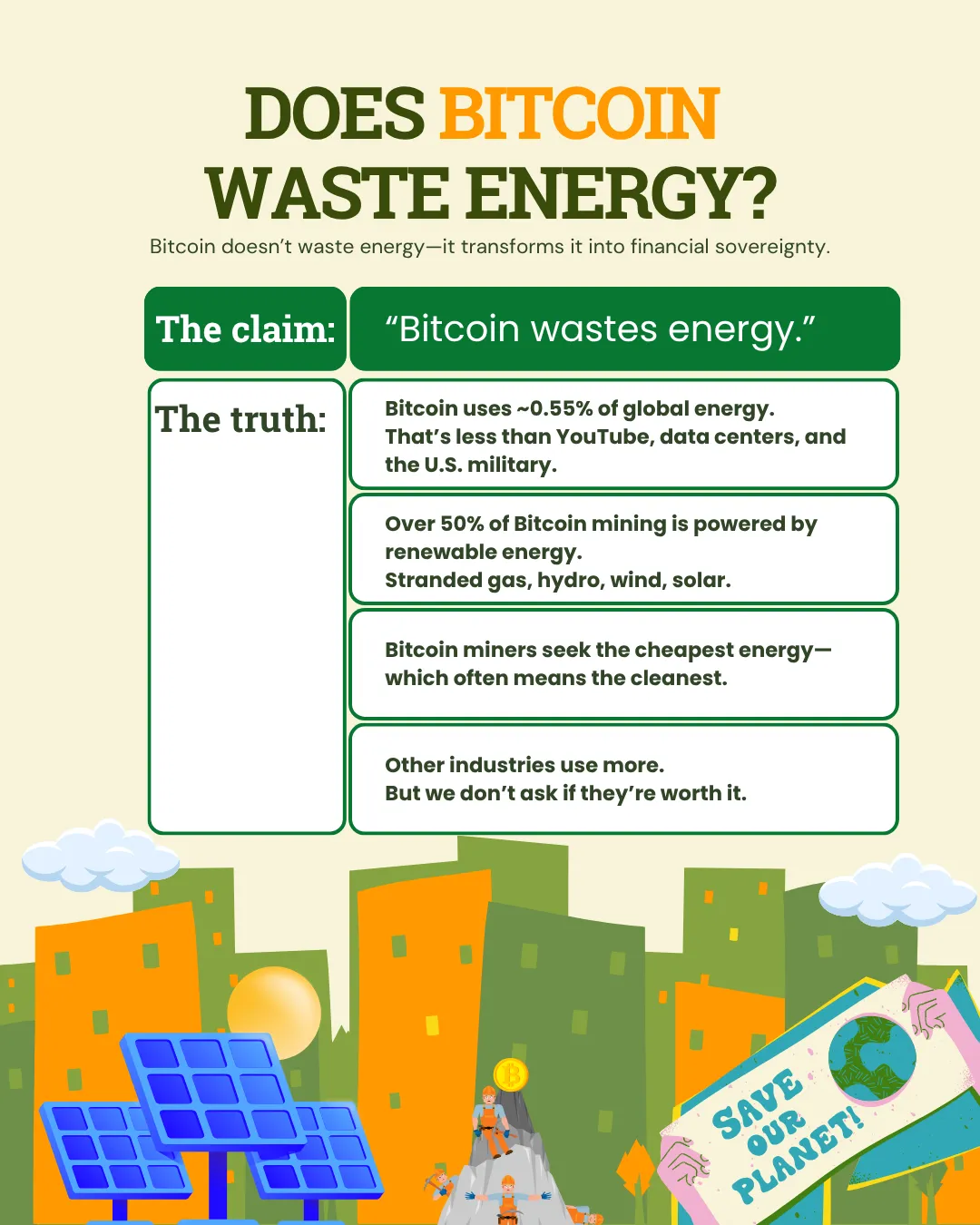
The Bitcoin Battery: Why “Unnecessary” Electricity Isn’t Wasted at All
A recent comment on one of our BullishBTC videos said this:
“It is electricity that did not need to be used.”
It’s a common reaction when people first hear that Bitcoin uses a lot of electricity. The assumption is that Bitcoin is frivolously consuming power that could’ve gone to something more “productive.” But this perspective misses the deeper story—and the genius—of how Bitcoin mining interacts with the energy grid.
So let’s break it down.
Energy Isn’t a Light Switch
Most people think of electricity like it’s coming from a lamp in their living room: flip the switch, and it turns off. But in the real world, that’s not how energy production works.
Much of our energy comes from sources that are either constant or unpredictable:
Geothermal vents generate heat 24/7.
Hydropower flows as long as the river runs.
Solar and wind depend on weather and daylight, not demand.
Flaring methane is literally burned off as waste from oil fields.
You can’t pause a river. You can’t store excess sunlight for next week’s usage (at scale, anyway). These sources either create power or they don’t—but our grids still need to balance supply and demand in real time.
Enter Bitcoin.
Bitcoin Is a Buyer of Last Resort
Bitcoin mining is the only economic activity on Earth that can instantly, flexibly, and profitably soak up excess energy from the grid. It’s the perfect customer when no one else wants or can use that power.
That “electricity that did not need to be used” becomes a financial battery. Bitcoin miners turn stranded, wasted, or surplus electricity into digital money. And better yet, they can do it anywhere—with no need for population centers, factories, or physical infrastructure.
This creates a brand-new energy market dynamic:
Remote geothermal in El Salvador? Now profitable.
Excess hydropower during the rainy season? Monetized.
Methane flares that would have been vented or burned? Captured and used.
This Isn’t Waste. It’s Efficiency.
When we think of waste, we picture pollution or destruction. But what Bitcoin mining actually does is monetize underutilized infrastructure. It improves efficiency and lowers cost for everyone else.
Bitcoin miners can:
Subsidize renewable builds by being early buyers of unused power.
Improve grid stability by ramping down during peak usage hours.
Make remote energy projects viable by providing baseline demand.
So no, it’s not electricity that “did not need to be used.”
It’s energy that couldn’t be used otherwise—now transformed into incorruptible digital value.
Energy Is Value. Bitcoin Just Makes It Transferable.
This is the lightbulb moment captured in the viral clip featuring Jordan Peterson and Dr. Saifedean Ammous:
“You’re telling me Bitcoin lets us move the value of energy through the internet?”
Absolutely.
Bitcoin doesn’t just use electricity. It gives value to electricity that would otherwise be lost—translating energy into something borderless, censorship-resistant, and permanently stored in cyberspace.
It's not waste. It's the dawn of a more efficient, global, value-transferring energy economy.
Start seeing Bitcoin as the grid’s secret weapon—not its enemy.
For more insights like this, download our free Bitcoin starter guide at BullishBTC.com.



